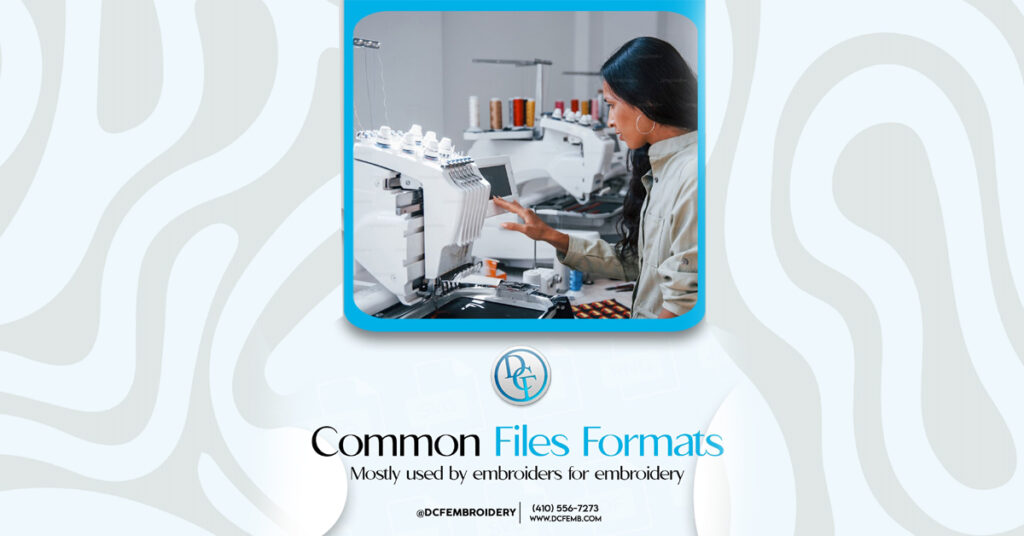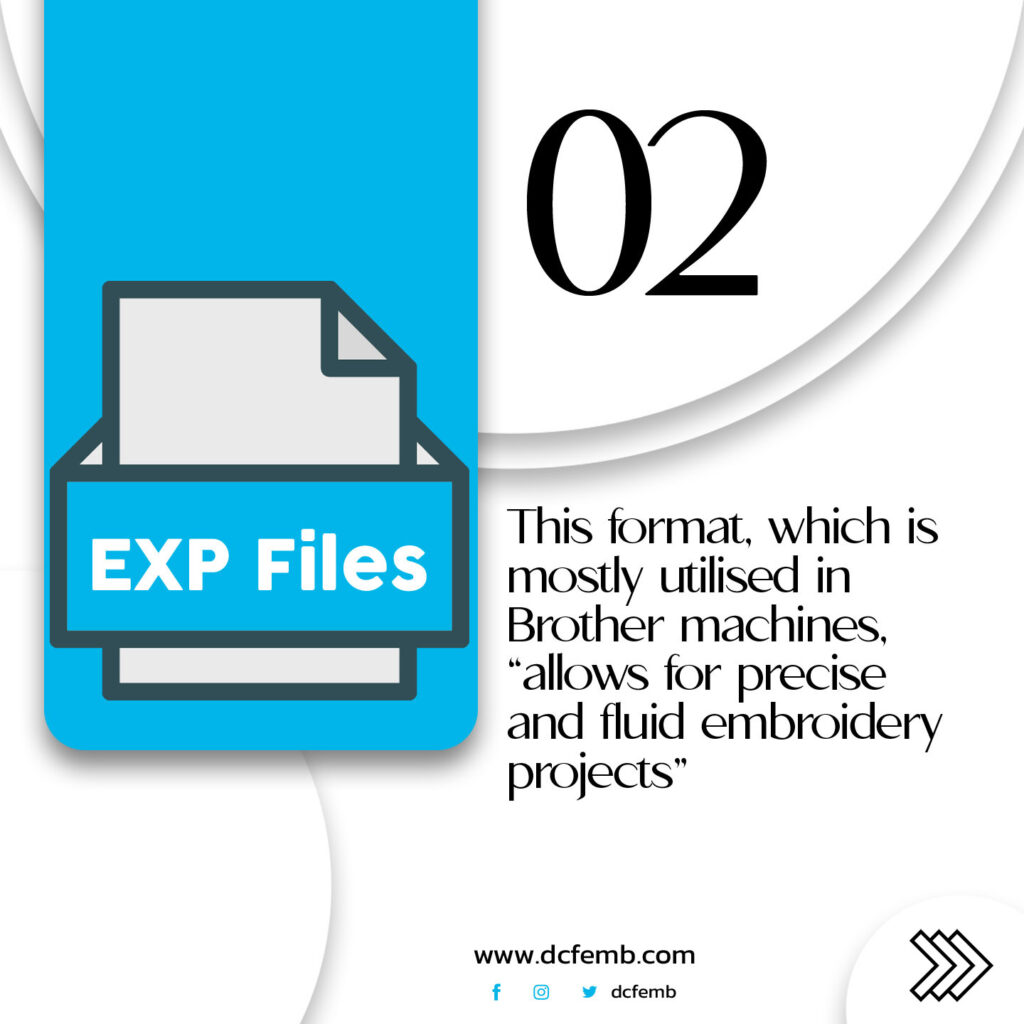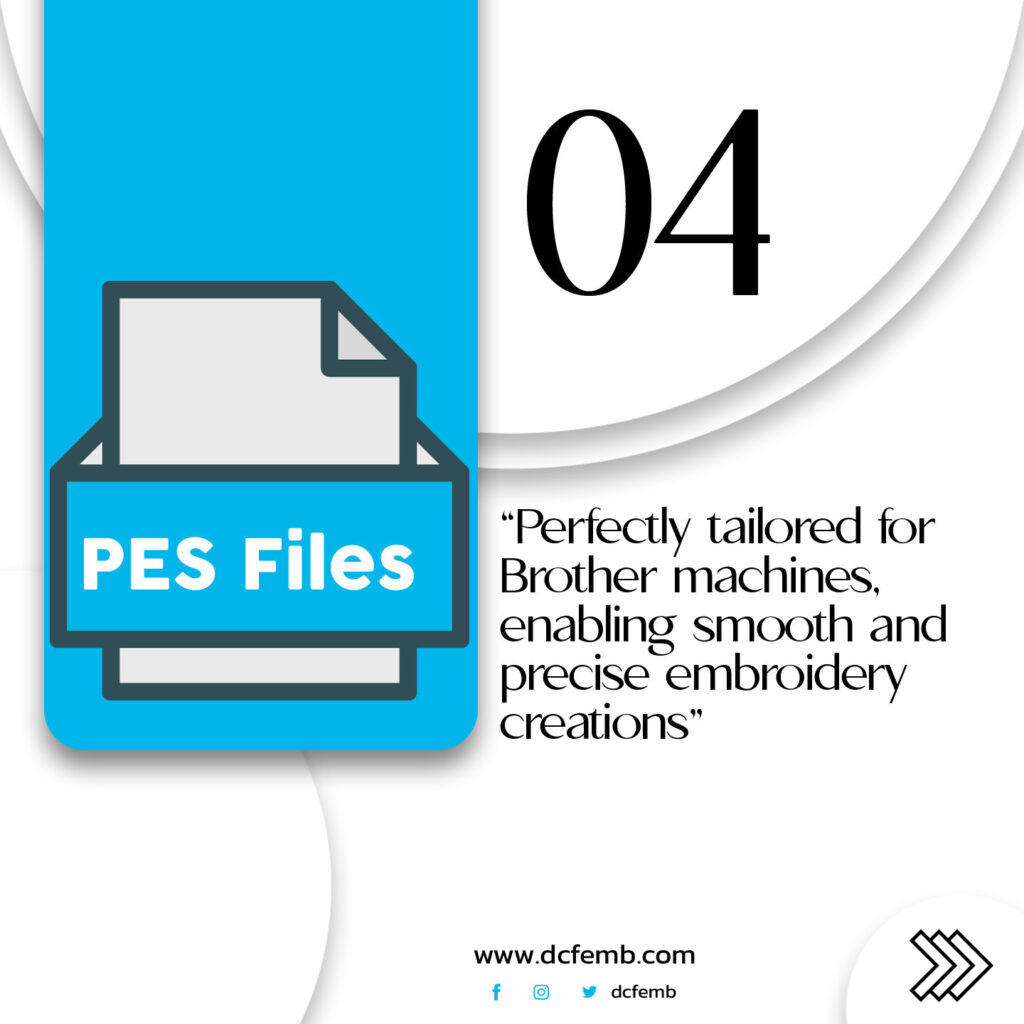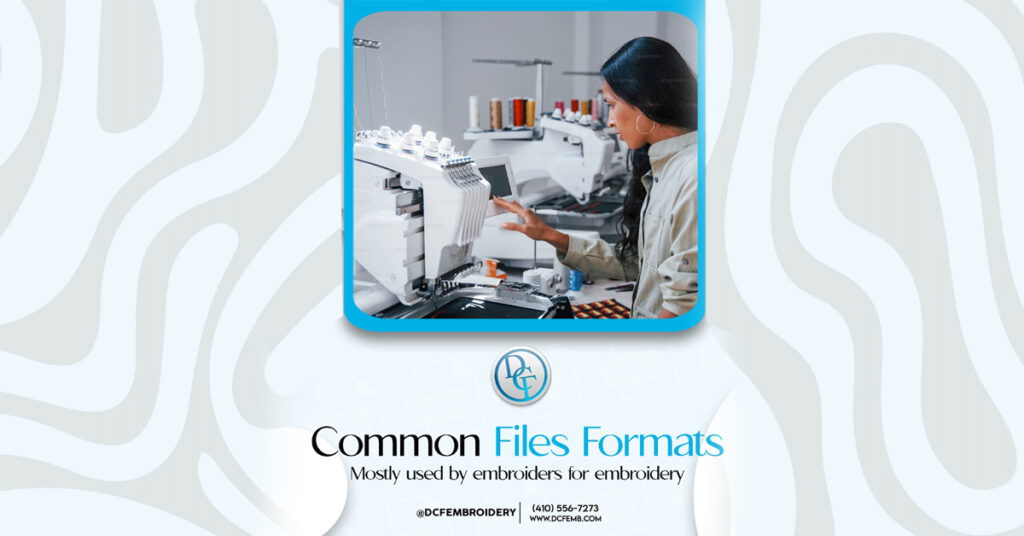DCF Embroidery
Discover the top embroidery file formats for stunning designs! From DST to PES, these formats are essential for embroidery digitizing. Unleash your creativity and bring your designs to life with the power of file formats. Ready to take your embroidery skills to the next level? Follow us now!

Introduction
Embroidery digitizing is the process of converting a digital image or design into a set of instructions that can be read by an embroidery machine. These instructions tell the machine how to move its needle and thread to create the desired design.
Embroidery digitizing is a fascinating process that transforms artwork into a language machines can understand, instructing embroidery machines to create intricate and beautiful designs on various textiles. Central to this process are the file formats used in embroidery digitizing, each serving a unique purpose in conveying information to the embroidery machine. In this guide, we’ll explore the key file formats in embroidery digitizing, shedding light on their functionalities and helping you navigate the intricate world of digital embroidery.
Types of file formats
There are many different file formats that can be used for embroidery digitizing. The most common formats are:
- DST (Tajima)
- EXP (Melco)
- PES (Brother)
- EMB (Wilcom)
Other common formats include:
- ART (Bernina)
- HUS (Husqvarna)
- JEF (Janome)
- VIP (Pfaff)
- XXX (Singer)
DST (Data Stitch Tajima)
DST is a widely used file format in the embroidery industry. It contains information about stitch coordinates, color changes, and other relevant details. Tajima embroidery machines recognize this format, making DST a popular choice for digitized designs.
DST files contain all of the information needed to embroider a design, including the stitch type, stitch length, thread color, and needle movement. They also contain metadata information, such as the design name and size.
DST files are compatible with most Tajima embroidery machines, as well as many other commercial embroidery machines from other brands. They can also be converted to other embroidery file formats, such as EXP and PES.


EXP ( Melco)
Developed by Melco, EXP is another common file format used in embroidery digitizing. It carries data about stitch types, colors, and design elements. Melco embroidery machines are compatible with EXP files.
EXP files contain all of the information needed to embroider a design, including the stitch type, stitch length, thread color, and needle movement. They also contain metadata information, such as the design name and size.
EXP files are compatible with most Melco embroidery machines, as well as many other commercial embroidery machines from other brands. They can also be converted to other embroidery file formats, such as DST and PES.
EMB (Wilcom)
EMB is a proprietary file format developed by Wilcom, a leading manufacturer of embroidery software. It is a widely used format that is compatible with most embroidery machines. EMB files store all of the information needed to embroider a design, including the stitch type, stitch length, and thread color.
EMB files are not as common as some of the other embroidery file formats, such as DST and PES. However, they are still a popular choice for many embroiderers.


PES (Brother)
PES files are specific to Brother embroidery machines. They store information about stitch data, color changes, and design elements. If you own a Brother machine, PES files are your go-to choice.
PES files contain all of the information needed to embroider a design, including the stitch type, stitch length, thread color, and needle movement. They also contain metadata information, such as the design name and size.
PES files are compatible with most Brother embroidery machines, as well as many other home embroidery machines from other brands. They can also be converted to other embroidery file formats, such as DST and EXP.
Common Embroidery File Formats
EMB, DST, EXP, and PES are the four most common embroidery file formats. They are all proprietary formats, which means that they were developed by specific embroidery software manufacturers.
When choosing an embroidery file format, it is important to consider the following factors:
- Compatibility: Make sure that the file format you choose is compatible with your embroidery machine.
- Quality: Some file formats produce better quality embroidery than others. DST and EXP are generally considered to be the highest quality formats.
- Size: Embroidery files can be quite large, so it’s important to choose a format that is compressed efficiently. This will help to reduce the file size and make it easier to transfer and store.
Conclusion
Embroidery digitizing relies heavily on the use of specific file formats to communicate design information to embroidery machines. Understanding the nuances of DST, EXP, PES, XXX, and other formats is crucial for ensuring the success of your embroidery projects. By choosing the right file format, considering compatibility, and leveraging conversion tools when necessary, you can embark on your digitizing journey with confidence. Whether you’re a seasoned embroiderer or a novice in the field, mastering the language of embroidery file formats opens up a world of creative possibilities.

